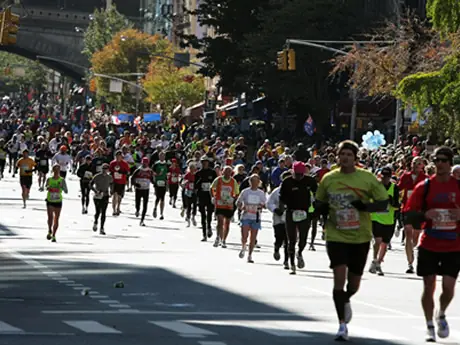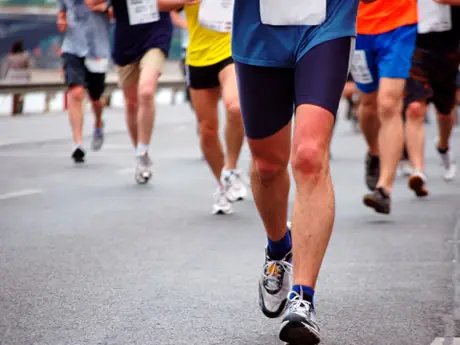
Any runner who has "hit the wall" during a marathon knows what it feels like to bonk and run out of fuel in the final miles of the race. It's a disorienting experience: energy levels plummet, sluggishness sets in, and goal pace becomes secondary to moving forward just to finish the race.
The reason runners experience the infamous "wall" is that your body only stores enough fuel (carbohydrate in the form of glycogen) for roughly 20 miles of running. And when the race is 26.2 miles, you have a major obstacle to making the last 10K of a marathon count.
To finish well and avoid that wall, there are three strategies you can implement during training and while racing to increase your reservoir of available carbohydrate and become more fuel-efficient. Not only will you have a bigger fuel tank, you'll also use less fuel while racing.
Strategy #1: Fasted Long Runs
Teaching your body to use less carbohydrate while running requires practice. And fasted long runs accomplish this goal, forcing your body to rely more on fat as a fuel source rather than the body's preferred "rocket fuel"—carbohydrate.
Execute a fasted long run by skipping breakfast before starting the run. Let your dinner the night before be your last meal. You'll still have a good amount of carbohydrate in your muscles and liver, but the levels won't be as high as they could be.
More: 4 Marathon-Specific Long-Run Workouts
And with a run of at least 90 to 120 minutes, your body will likely experience a minor bonk during the final miles of the long run. Don't worry; this is a good thing. Just like the stress you experience from a hard interval workout, a minor bonk teaches your body to use fuel more efficiently so the next time you go for a fasted long run, you'll be able to run slightly longer before hitting that wall.
Fasted long runs are best run during the early stages of your marathon training when the goal is simply to complete the distance. Later in the training cycle, when the goal of the run is on performance (running a desired pace for the whole run), it's best to properly fuel with enough carbohydrate.
Strategy #2: Run at an Ideal Body Weight
Smaller runners burn fewer calories than larger runners because it takes more energy to transport a heavier weight than it does to move a lighter weight. To save fuel, run the marathon at a healthy, ideal weight. While weight loss can be dangerous during periods of heavy training, try to start a marathon training cycle already at goal weight by focusing on weight loss before marathon training.
- 1
- of
- 2
About the Author

Get ACTIVE on the Go


Couch to 5K®
The best way to get new runners off the couch and across the finish line of their first 5K.
Available for iOS | Android







Discuss This Article